Thrips are among the most difficult insects to see, yet the damage they cause is easy to spot. I’ve seen big ones on occasion, but more often they’re tiny – smaller than 1mm. They scratch leaves and suck the sap, leaving green foliage silvery. Black or brown spots mark their droppings.

Healthy pieris foliage next to badly damaged pieris foliage
Yes, the contrast between healthy foliage and thrips-damaged foliage is that great.
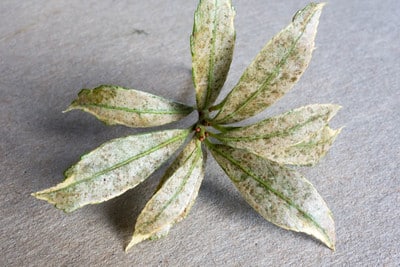
Thrips damaged foliage
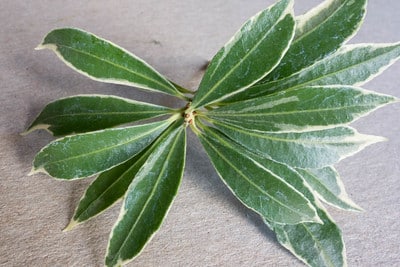
Healthy foliage
Thrips damage is often just as identifiable from the underside of leaves.
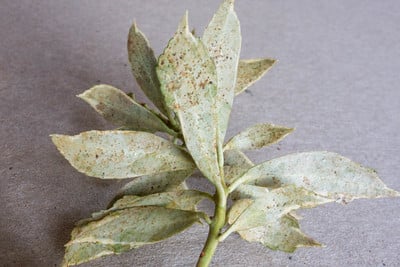
Thrips damage from below
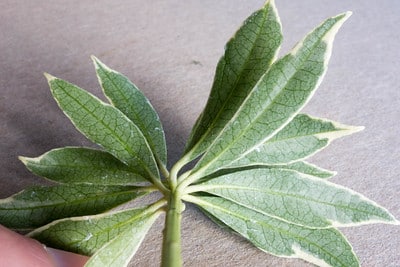
Healthy foliage
They can do a lot of damage in a short amount of time so it’s important to take note of any untoward activity on bonsai foliage.
What bonsai variety do they love best? I don’t know if it’s their absolute favorite, but azalea and rhododendron are good candidates.
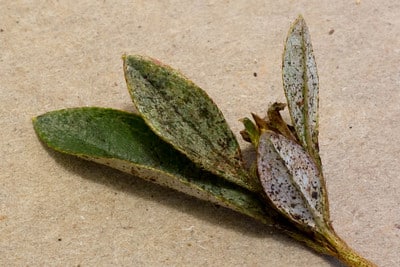
Thrips damage on azalea
I tend to address infestations with the usual regimen – oils, soaps, contact and systemic pesticides – though when I spray I am very careful to completely coat the upper and lower surface of the leaves. I aim to do this whenever I’m spraying, but I make extra sure to coat all surfaces when combating thrips as they often feed on the undersides of leaves.
Because damaged leaves don’t “heal” after the insects are gone, it can be hard to make sure the infestation is under control. Follow-up applications and constant vigilance are the best approach to keeping thrips under control.
Subscribe to Bonsai Tonight
New Posts Delivered Every Tuesday and Friday
Maria says
Thank you for your recent posts on the pests of bonsai. I’ve had to deal with a couple of them lately, and your posts really help. I’m going to try that 12 to 1 milk ratio on the powdery mildew for my chard plants. I’ll let you know.
John Lee says
The thirps seem to do the same damage as lace wing to azalea, are they the same pest, just a different name?
Jonas Dupuich says
Hi John – “Lacewing” can refer to both lace wings and lace bugs. Lace bugs cause damage that looks similar to thrips damage though the two are distinct insects. The similarly named lacewing is a fairly common biological control for aphids, thrips and other garden pests.